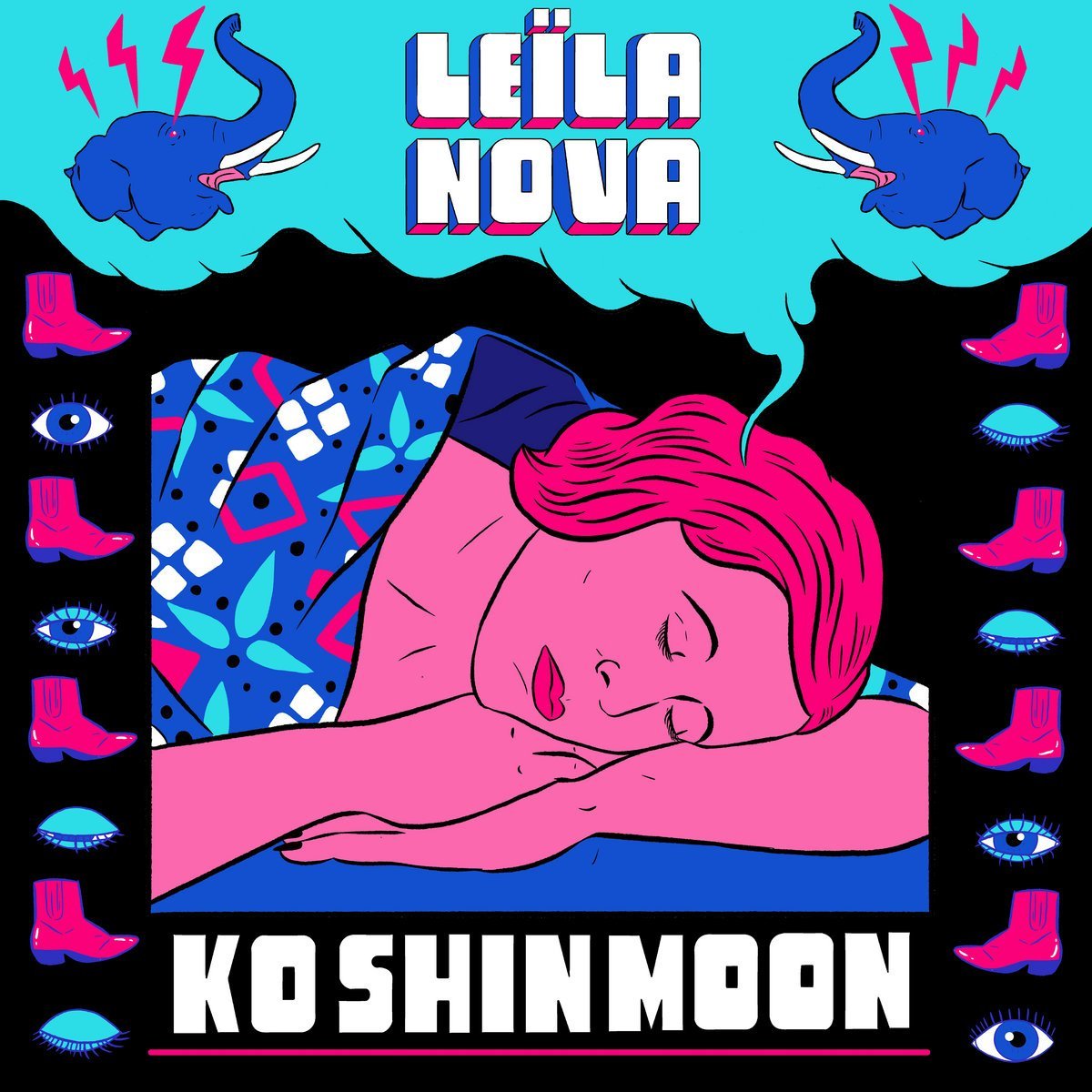We are a product of our own environment. Nowhere is this more evident than in music, as an accurate representation of the artist’s social fabric. To Axel Moon (oriental lutes, beats) and Niko Shin (keyboards) of Ko Shin Moon, this phenomenon doesn’t seem foreign.
“In Aubervilliers 90% of the population are immigrants: the café downstairs is run by Kabyle people, the grocery shop by Turks, I play saz and sitar, I listen to Raï on cassette”, Moon told in 2019. “All of that is linked to where I live, my past, my musical sensibility”.
Sonically speaking, Ko Shin Moon’s third album Leïla Nova is a fusion of the band’s floor-ready, acoustic debut and the sample-heavy ethnotronica of 78 Fragments. Released on Fabrice Géry’s Akuphone, a Bagnolet-based label dedicated to all sounds global, the album bridges the gap between the French electro-pop and the non-Western music – for the most part – with natural ease.
This is particularly true for the instrumentation; ‘Canon Neon’ is a thrilling rendezvous of Miss Kittin’s filthy electro clash and Selda Bağcan’s trippy folk rock – as is the marriage of vocoder à la Moon Safari by Air and Mulatu Astatke -style saxophone in ‘Nazani’ or the title track’s iconic TB-303 bass synth that augments the euphoric Syrian debke to the extent of giving Omar Souleyman run for his money.
Only towards the end does Leïla Nova run out of steam. After funky Algerian chaabi (‘Papilio Dance’) and space-pop (‘Magna Mater’) it’s hard to believe the percussive patterns of Anatolia and Punjab are limited to the four-to-the-floor tracks such as ‘Ghazal’ and ‘Halay 2020’ suggest. Be that as it may, by the end of the free-flowing ‘Mishra Shivanjani’, the ideas have run dry.
Ko Shin Moon’s argument is still the same, though: we have a remarkable ability to engage in fair, healthy trade of our own cultural characteristics for those of others. We should not let hypervigilance to culture vultures get in the way.
“As a musician, there is obviously the question of stereotyping and caricature”, Moon explained. “We try to pay attention to that. Through knowledge, through research and through learning.”


